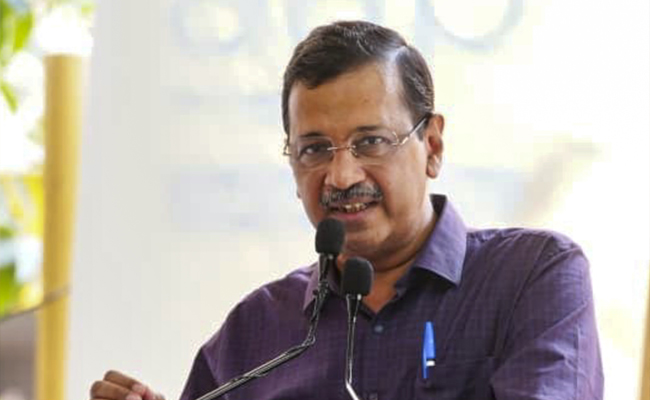New Delhi (PTI): CPI(M) member John Brittas said on Monday that the CUET introduced by the Centre is to deny marks and admission to south Indian students in Delhi, which was immediately condemned by Rajya Sabha Chairperson Jagdeep Dhankar.
During the discussion over Motion of Thanks on the President's address, Dhankar intervened several times and raised objection to the statements made by Brittas, who said the Centre should entrust the state governments to conduct the test.
"I have studied in JNU. JNU has been conducting their test for 50 years without any leak. Now you introduced CUET (Common University Entrance Test).
"The only reason why you introduced CUET was because you see a lot of south India students getting admission in Delhi University. You have brought CUET to deny admission to south Indian students here," Brittas said.
Dhankar intervened and condemned his statement.
"You started with a very lofty quote of the oath and look where you have landed. In a country like ours, which is one, you are raising a different kind of voice. I strongly condemn it," he said.
Brittas raised the issue of paper leak and said the Centre should entrust the state governments to conduct the test.
"You brought all the exams to Delhi," Brittas said, making certain remarks against the RSS pracharaks.
Dhankar immediately intervened and asked to expunge the remarks which cannot be substantiated.
Brittas said some coaching institutions and beef companies have also given electoral bonds to BJP.
Immediately after his remark on electoral bonds, Dhankar and Brittas entered into an exchange of words.
Dhankar intervened during the speech and said Brittas has "lost his way", while the CPI(M) member said the chairperson is trying to derail him.
"You have completely lost your way. I can't derail you. You are derailing yourself.
"You are trying to create a mechanism whereby you can get publicity. Talk of substance. Make your contribution," Dhankar said.
Brittas said the prime minister and ministers take oath, which mentions working in the interest of all people without any discrimination.
He said the prime minister has broken his oath when he called Muslim "infiltrators". He said the BJP members should change their party symbol from lotus to bulldozer.
"Last time on the discussion on motion of thanks, I had said Siya Ram is not with you. You were with Nathu Ram Godse.
"You saw it in the election. Siya Ram left you. You have been defeated thoroughly in Faizabad. All the gods have deserted you," Brittas said.
The CPI(M) member continued to attack the ruling government over educational issues.
"Education for you is to invent a new past because every fascist believes that those who control the past control the future," he said.
Brittas said history has changed and Babri Masjid has been obliterated from the history of India.
"Tomorrow, the students will study that Gandhi ji died of flu or pneumonia and Nathu Ram came to take Gandhi ji to the hospital. Our students will be studying in History," Brittas said.
Dhankar again intervened when Brittas pointed towards BJD member Sasmit Patra whose party recently lost polls in Odisha assembly election.
"History of the BJP has been to eat all the allies," Brittas said.
Let the Truth be known. If you read VB and like VB, please be a VB Supporter and Help us deliver the Truth to one and all.
Panaji (PTI): As part of a crackdown against tourist establishments violating laws and safety norms in the aftermath of the Arpora fire tragedy, Goa authorities on Saturday sealed a renowned club at Vagator and revoked the fire department NOC of another club.
Cafe CO2 Goa, located on a cliff overlooking the Arabian Sea at Vagator beach in North Goa, was sealed. The move came two days after Goya Club, also in Vagator, was shut down for alleged violations of rules.
Elsewhere, campaigning for local body polls, AAP leader Arvind Kejriwal said the fire incident at Birch by Romeo Lane nightclub at Arpora, which claimed 25 lives on December 6, happened because the BJP government in the state was corrupt.
An inspection of Cafe CO2 Goa by a state government-appointed team revealed that the establishment, with a seating capacity of 250, did not possess a no-objection certificate (NOC) of the Fire and Emergency Services Department. The club, which sits atop Ozrant Cliff, also did not have structural stability, the team found.
The Fire and Emergency Services on Saturday also revoked the NOC issued to Diaz Pool Club and Bar at Anjuna as the fire extinguishers installed in the establishment were found to be inadequate, said divisional fire officer Shripad Gawas.
A notice was issued to Nitin Wadhwa, the partner of the club, he said in the order.
Campaigning at Chimbel village near Panaji in support of his party's Zilla Panchayat election candidate, Aam Aadmi Party leader Kejriwal said the nightclub fire at Arpora happened because of the "corruption of the Pramod Sawant-led state government."
"Why this fire incident happened? I read in the newspapers that the nightclub had no occupancy certificate, no building licence, no excise licence, no construction licence or trade licence. The entire club was illegal but still it was going on," he said.
"How could it go on? Couldn't Pramod Sawant or anyone else see it? I was told that hafta (bribe) was being paid," the former Delhi chief minister said.
A person can not work without bribing officials in the coastal state, Kejriwal said, alleging that officers, MLAs and even ministers are accepting bribes.





